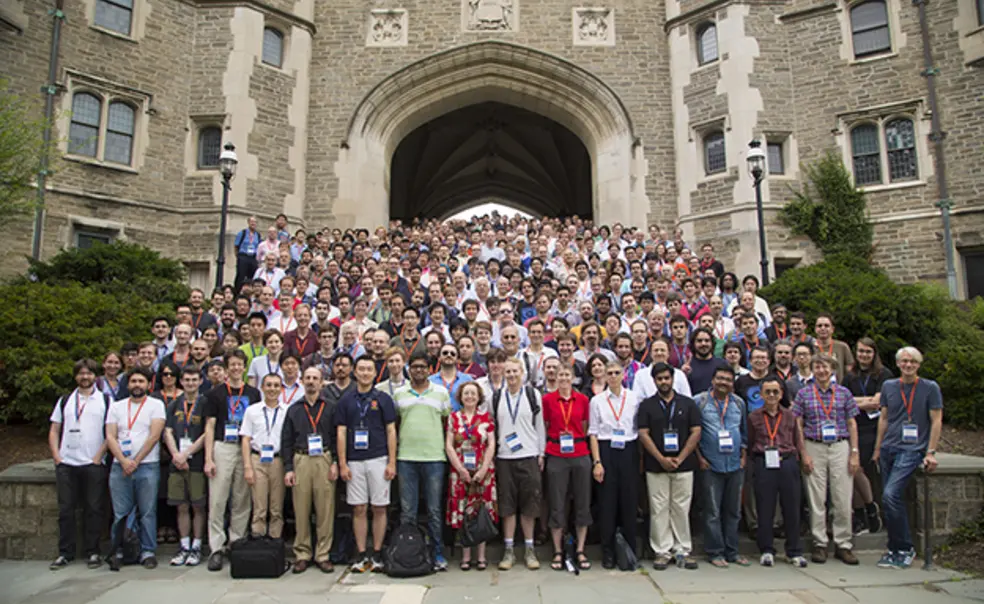Summer Strings: Physicists Debate Theories, Evidence at Annual Conference
By Mark Alpert â82Princeton was the perfect venue for this yearâs conference because so many string theorists work in the Universityâs physics department and at the Institute for Advanced Study. âNo other institution is as closely associated with string theory,â said Nima Arkani-Hamed, a physicist at the Institute (and one of the stars of the recent documentary Particle Fever). âPrinceton was the incubator for the field for many years.â
String theory got its start in the late 1960s. It proposed a new building block for all matter and energy: a minuscule string, smaller than a billionth of a billionth of a billionth of a millimeter, that can vibrate in a variety of modes. Each mode corresponds to one of the elementary particles; a string that vibrates in one mode is an electron, for example, and a string that oscillates in a different pattern is a photon. Over the next four decades the theory grew vastly more complex, but it also attracted criticism. Some physicists have begun to doubt whether theyâll ever be able to prove the theory right or wrong.
The debate flared among the Romanesque arches of Princetonâs Alexander Hall, where the string theorists gathered for their abstruse presentations. The flashpoint was a claim, made in March, that a team of astronomers had found evidence of an ancient cosmic event called inflation, which may have triggered the Big Bang. More recently, other researchers have questioned the evidence, saying the detected signals might have come from galactic dust rather than the birth of our universe. The head of the team, John Kovac â92 of the Harvard-Smithsonian Center for Astrophysics, appeared at the conference to summarize the findings for the string theorists, who are naturally interested in real-world tests of esoteric hypotheses.
Then things got heated, or at least a little more impassioned than what youâd normally see at a physics conference. Princeton physicist Paul Steinhardt broadened the debate by criticizing the inflation hypothesis, which can be tweaked in many ways to produce an enormous range of outcomes, each with a different prediction for what astronomers should observe. According to Steinhardt, inflation is scientifically meaningless because âno test or combination of tests can disprove it.â He didnât say anything about strings, but in the final talk of the conference David Gross, a Princeton emeritus professor who is now at the University of California, Santa Barbara, noted that the same criticism can be leveled against string theory as well.
Nobel laureate Gross vigorously defended his field, arguing that string theory offered valuable insights and promising research opportunities, even if it didnât make predictions that could be experimentally verified. Steinhardt, however, expressed concern that some string theorists support the so-called "string landscape," a hypothesis that predicts a huge spectrum of different possibilities for what particle physicists should discover, which is just as untestable as inflation. âThis is a remarkable and frightening deviation from the last 400 years of normal science,â he said after the conference.
Outside Alexander Hall, the Princeton campus was deserted. The June sunshine poured relentlessly on the empty lawns and abandoned dormitories. The universe went about its business, ignoring all the scientists who struggled to understand it. There was only one thing left to do: go to the beach.Mark Alpert â82 is an internationally bestselling author of science thrillers. His latest novel is The Furies (Thomas Dunne Books/St. Martinâs Press).For the record: This post has been edited to clarify points raised by Professor Paul Steinhardt.













No responses yet